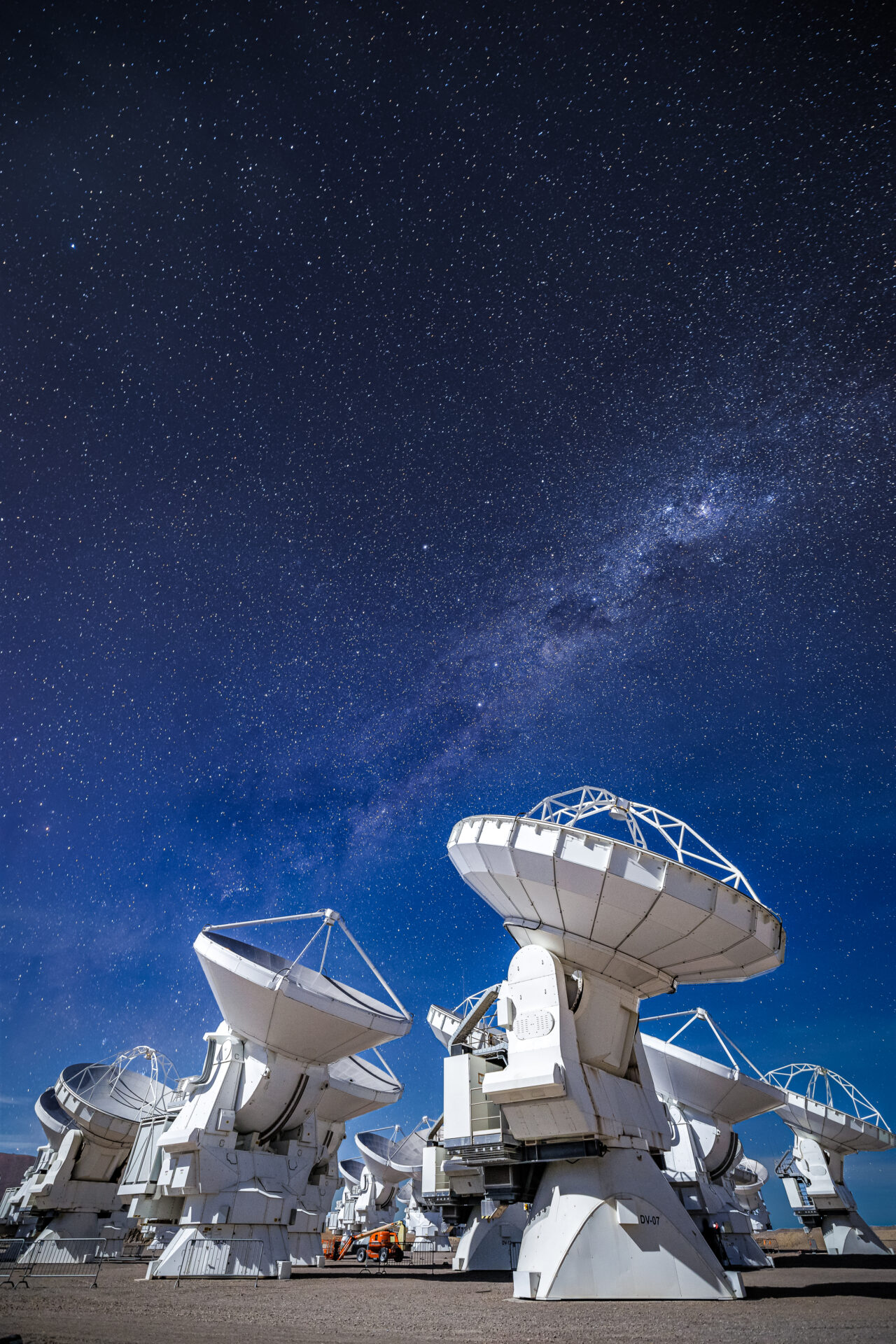
Credit: Alex Pérez.
ALMA Proposal Reviews are Due 04 June 2025 at 15:00 UTC
All PIs (or designated reviewers) for Cycle 12 proposals are reminded that, as part of the distributed peer review process, their reviews need to be submitted by today, 04 June, at 15:00 UTC. Failure to submit a complete set of reviews by this deadline may result in the PIs' (or designated reviewers') proposals being disqualified.
Stage 2 of the distributed peer review process will start on 05 June. At this point, reviewers may read comments from other reviewers and may adjust their scores if so desired. The deadline for completing Stage 2 of the proposal review process is 19 June 2025 at 15:00 UTC.
More details on the overall review process can be accessed through this link.
Status Update on the ALMA 2030 Wideband Sensitivity Upgrade at EAS 2025
26 June 2025
Cork, Ireland
Website
ALMA users attending the European Astronomical Society (EAS) 2025 annual meeting in Cork, Ireland, may be interested in attending lunch session LS6 entitled "The ALMA 2030 Wideband Sensitivity Upgrade: status update". The Wideband Sensitivity Upgrade has the goal of increasing the instantaneous spectral bandwidth of ALMA's receivers by a factor of 2 to 4 while also upgrading the full signal chain of ALMA to provide overall improvements in ALMA's capabilities for continuum and spectral scan observations. This special lunch session at the EAS is an opportunity to get updated information on the status and future plans for the Wideband Sensitivity Upgrade.
Call for Proposals for ALMA Development Studies
Deadline: 27 August 2025 11:00 CEST
Website
ESO has announced a new Call for Proposals for developmental studies related to ALMA upgrades, with a particular emphasis on the development of new receiver components that will increase the current IF bandwidth by a factor of 4 as well as software initiatives related to the Wideband Sensitivity Upgrade. Institutions interested in participating in this should register on the In-Tend portal at this link and indicate their interest in the ALMA Development Studies 2025 using reference FCFP-129429-AMA.
Any institutions interested in this Call for Proposals should register their interest as soon as possible so as to ensure that they receive all of the relevant documentation and circulars from ESO. The deadline for submitting a proposal itself is 27 August 2025 at 11:00 CEST.
Job Opening for Astronomer / Project Scientist at ESO Garching
Deadline: 11 July 2025
Website
ESO is advertising an Astronomer / Project Scientist position working with ALMA at the ESO Headquarters in Garching. The position will be heavily involved with the Wideband Sensitivity Upgrade as well as other ALMA upgrades and developmental work. A complete list of the main duties and responsibilities as well as necessary qualifications are listed within the advertisement.
Applications should include a motivational letter, a CV containing a publication list, a research statement, and the names and contact details for three references. The deadline for applying is 11 July 2025.
I-TRAIN 25: The ALMA UV Coverage Assessment Tool (assess_ms)
13 June 2025 11:00 CEST
Zoom Link
The 25th edition of the online I-TRAIN ALMA training sessions will feature Dirk Petry introducing the assess_ms tool, which has been developed for providing new and more complete ways to analyze the uv coverage of ALMA observations. This will be particularly useful for people who want to understand the details of the expected beam sizes and shapes from their ALMA visibility data as well as the maximum recoverable scales that can be reproduced by ALMA observations.
The session starts on 13 June 2025 at 11:00 CEST and can be accessed via this Zoom link. Note that the presentation will also be recorded and posted online.
UK ALMA Regional Centre Support Information and Contact Details
The UK ALMA Regional Centre Node is available to provide support to people working with or interested in working with ALMA. This may include help with preparatory data analysis, including the use of archival data, proposal and observing preparation, data calibration and imaging, and subsequent data analyses. We can also provide computing facilities for ALMA data processing and training for individuals or groups of people.
If you have any ALMA science results that they want to share with the UK ALMA community, please contact us, and we will endeavour to include those results in our next newsletter and on our website.
For any ALMA-related queries or support requests, please contact the UK ARC Node via the following:
ALMA Helpdesk: help.almascience.org
Email: This email address is being protected from spambots. You need JavaScript enabled to view it.
Web: www.alma.ac.uk

